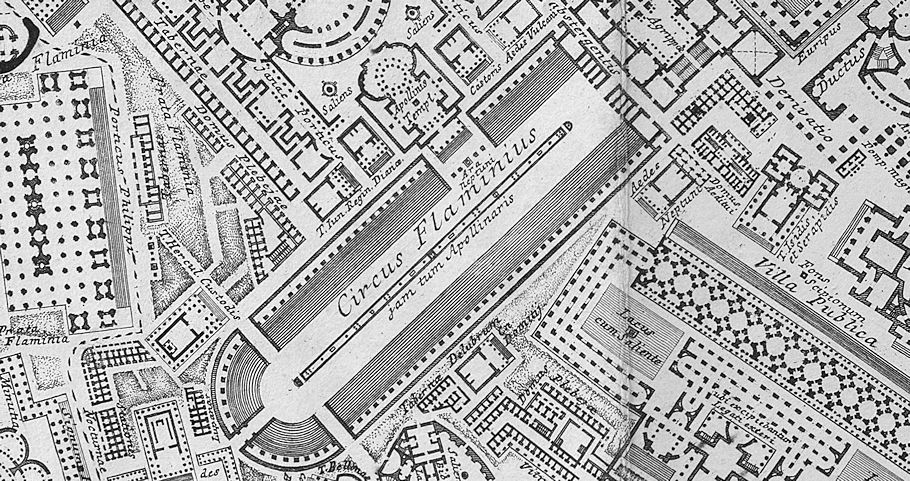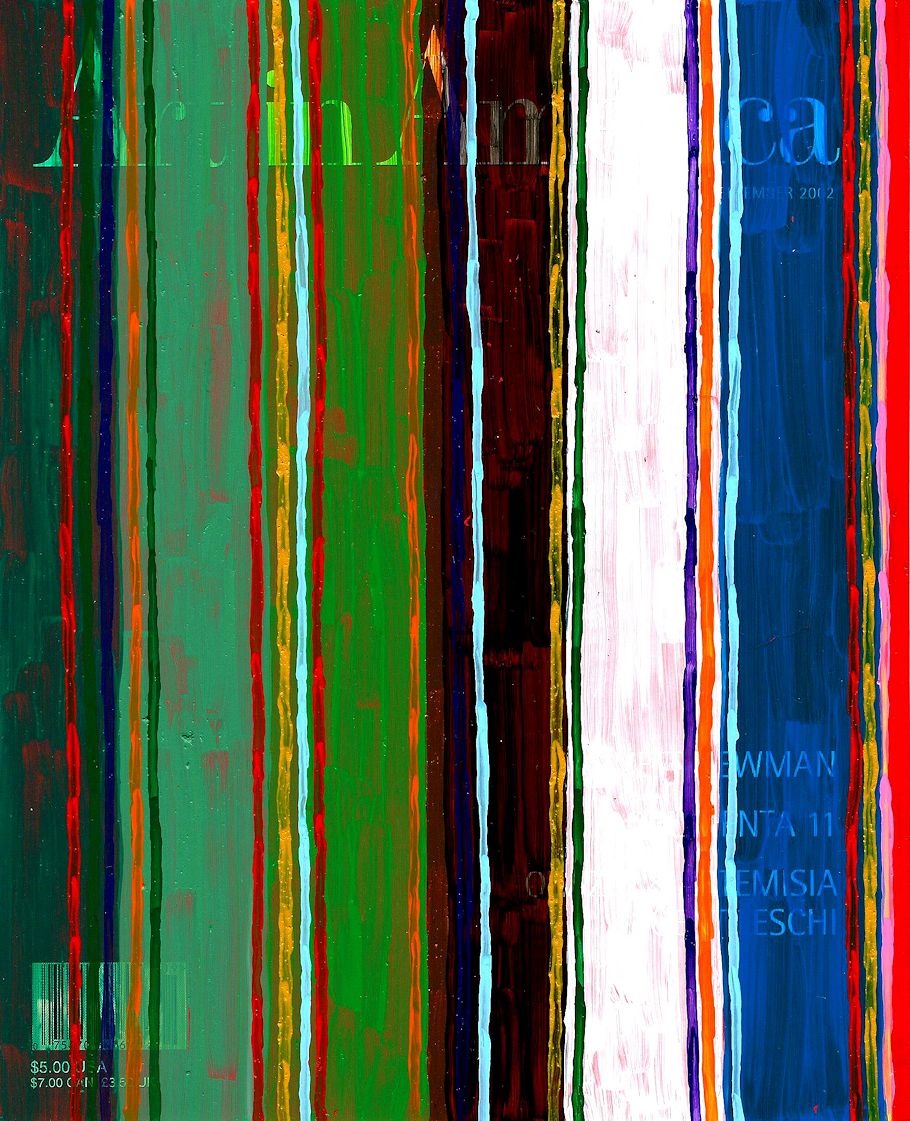7 September 1778

Another problem: Acording to Livy there was an altar of Neptune within the Circus Flaminius. That altar has now been erased from the Ichnographia copper plate, and Piranesi's not exactly sure how to incorporate the altar within a newly designed Circus Flaminius plan. Neptunus Equester was a god of horses and horsemanship, as well as patron of horse racing, after all.
7 September 1997
Diana/Triumphal Way
Just two days (Thursday) before Diana's funeral service, I came across an article on the Triumphal Way in Ancient Rome. I found it in the first issue of Ritual, which I have owned since it came out in 1983. I was not mindful of the essay's existence, and I was happy to find it because of my current work regarding Piranesi' Campo Marzio which has the route of the Triumphal Way demarcated within it.
I read and finished the essay between late Thursday night and late Friday night. It addresses the notion of the elusive Triumphal Arch and the meaning of the passage of the Triumphator into the city, and then through the city. It also spoke of the monuments that were passed-by in the course of the procession, and how they were, over time, steadily incorporated into the ritual. It also spoke of how the crowds were an integral part of the procession and ritual--manifestation of the social mirror, the reflective lens of the "see and be seen" phenomena.
Mere hours after having finished the essay I was watching Princess Diana's funeral service. I turned on the television just as Earl Spencer, Prince William, Prince Harry, Prince Charles, and Prince Philip joined the procession at Buckingham Palace, taking their place behind Diana's coffin. As the procession made its way to Westminster Abbey, the television commentators called out the various monuments and landmarks: Victoria Fountain, Hyde Park, the Lutyen's Cenotaph at Whitehall. When I saw the coffin pass through the arch at xxx, however, I realized that I was indeed witnessing Diana's Triumphal Way.
Campo Marzio - the triumphal way
I will have to do another careful reading of the Plattus text, however, I think the strongest thing for me to come out of the essay is the story about the entrance procession of the Holy Roman Emperor, Charles V in 1536 (nine years after his troops had sacked Rome in 1527). In this procession the route ended at the Vatican/St. Peter's. This very much brings to mind Piranesi's point of origin at the (new) Temple of Mars, which is very close to the actual sitting of St. Peter's. Again there may be a symbolic reversal in the route that Piranesi marks.
This story from the Renaissance also made me mindful of the fact that Nero's garden was already the site of Constantine's old St. Peter's basilica. Therefore, it may not be all that far-fetched to see Piranesi making symbolic reference to the ancient Roman reversal from paganism to Christianity. In this sense, the porticus Neroniani is closer to old St. Peter's than to the present basilica.
7 September 2000
reenactment season begins
So where does architect Aldo Rossi fit in this happening of live, death and triumphal way? Oddly enough, the answer lies again within ancient Rome by way of Piranesi's Campo Marzio. There is a documented but not too often recognized direct relation between Piranesi's design of the Bustum (place where bodies are burned and buried) Hadriani and Rossi's design of Modena Cemetery. Piranesi's design constitutes an axis of death, and Rossi discovered this death axis quite some time ago, for it reappears in his cemetery at Modena.
7 September 2001
Re: Roman freeways
I'm by no means an expert in Roman history and design, but the Romans did have an extensive road system throughout the empire. I'm sure there is all kinds of information out there on this topic. When it comes to elevated transport systems, I think of the Roman aqueducts. Not a people/vehicle mover, but a 'freeway' of water nonetheless. I would say that the largest factor of ancient transport is that most people back then still moved from place to place on foot. And the largest number of people to travel great distances were aptly the foot soldiers.
On the urban issue, at least in Rome, it is said that by later imperial years (the second century AD and thereafter) one could traverse the entire city (or at least the Campo Marzio) under cover of roof. There were a great many porticus which were public loggias of a sort. Many a porticus had its distinct character, and some, kind of like today's malls, were great places to shop. You might be able to stretch the notion of a network of public porticus into the notion of a urban pedestrian freeway.
7 September 2003
   
Virtual Museum 138
7 September 2017

zero eight five
7 September 2022
. . . . . .
|